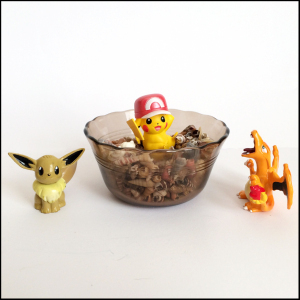Cassandra Page's Blog, page 15
October 9, 2016
Review: ‘Faking It’ by Gabrielle Tozer
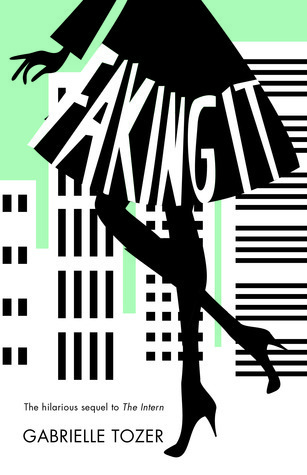
Things are looking up for Josie Browning. Her boyfriend, James, is crazy about her, and she’s scored a writing job at indi. Now the pressure is on for Josie to prove she’s got what it takes to help plan indi’s launch. Plus, she’s battling with flatmates, frenemies and confusing feelings for travel writer Alex.
High on the perks at indi, Josie’s doing a pretty good job of faking her way in the industry – even though she still hasn’t mastered her hair straightener. But when Josie is invited to a media junket, she accidentally sets off a string of lies that threaten to ruin her reputation, love life and career forever.
Faking It is the sequel to The Intern, which I reviewed last year — however, it stands alone, so if you get the opportunity to pick up the second book and want to dive straight in, the experience won’t be too rocky.
I devoured Faking It in a couple of sessions — it’s very light, fun and easy to read, with a fair number of cringeworthy moments. Josie Browning has gotten perhaps a tiny bit better at thinking before she speaks (a very tiny bit) and her clumsiness is less of a feature in this book. But she still manages to get herself into all manner of tricky situations, mostly by not admitting she needs help when she does. Hence the whole “faking it” thing, of course. That’s kind of the point.
(I was actually really mad at Liani, Josie’s boss, for throwing the poor girl so far into the deep end at various points that she couldn’t even see the edges of the pool anymore. I mean, seriously, woman — you can’t be mad when Josie screws up under that much pressure. She’s 18 and hasn’t even finished her journalism degree yet! What would she know about dealing with celebrity agents and organising magazine launches?! Okay, I’ve got that out of my system now…)
James is sweet, and I loved the adorkable dynamic between him and Josie. He does drop the ball in a pretty spectacular fashion at one point, and then overreacts at another (at least as far as I am concerned) — but that’s part of what makes him a more realistic love interest rather than being a perfect cardboard cutout.
However, for me, the shining treasure in this book is the dialogue, especially Josie’s. Her intermittent verbal filter meant that she often came out with lines that had me giggling, and at other times were raw in their honesty. And the back-and-forth banter was something I could totally hear in my head. It seemed so natural.
The other thing I really enjoyed was catching a glimpse of Josie’s mother recovering from her shattered relationship and starting to date again. Even though Josie was quietly horrified, I was all, “You go, Josie’s mum!”
This series is fun, fluffy YA. The plot is fairly predictable but Josie is so enjoyable a main character that I didn’t mind. Now, can we have a spin-off about Alex, please?




October 7, 2016
Review: ‘Life Debt’ by Chuck Wendig
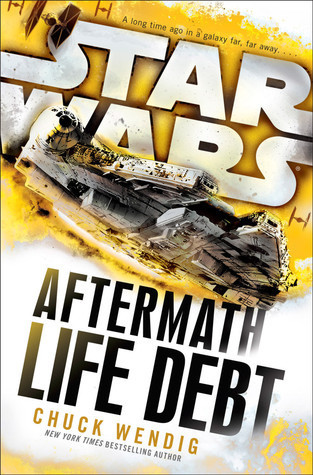
“It is a dark time for the Empire. . . .”
The Emperor is dead, and the remnants of his former Empire are in retreat. As the New Republic fights to restore a lasting peace to the galaxy, some dare to imagine new beginnings and new destinies. For Han Solo, that means settling his last outstanding debt, by helping Chewbacca liberate the Wookiee s homeworld of Kashyyyk.
Meanwhile, Norra Wexley and her band of Imperial hunters pursue Grand Admiral Rae Sloane and the Empire’s remaining leadership across the galaxy. Even as more and more officers are brought to justice, Sloane continues to elude the New Republic, and Norra fears Sloane may be searching for a means to save the crumbling Empire from oblivion. But the hunt for Sloane is cut short when Norra receives an urgent request from Princess Leia Organa. The attempt to liberate Kashyyyk has carried Han Solo, Chewbacca, and a band of smugglers into an ambush resulting in Chewie s capture and Han s disappearance.
Breaking away from their official mission and racing toward the “Millennium Falcon” s last known location, Norra and her crew prepare for any challenge that stands between them and their missing comrades. But they can t anticipate the true depth of the danger that awaits them or the ruthlessness of the enemy drawing them into his crosshairs.
Life Debt is the second book in the Star Wars: Aftermath series, set between Return of the Jedi and the new movie franchise. I reviewed the first book here.
You don’t have to be a huge Star Wars fan to enjoy these books — it’s been years since I saw any of the original six movies, and I think the only thing I really missed as a result is that I didn’t always have that ingrained knowledge of what a particular alien race looks like. Also, if you’re an audiobook fan, I strongly recommend listening to them as Marc Thompson, the voice actor, did an amazing job!
One of the beefs some people had with Aftermath was that there wasn’t enough of the primary Star Wars characters — we catch a glimpse of Han and Chewie, and that’s about it. Almost all of the story focuses on the events around former rebel pilot Norra and what eventually turns into her crew. Life Debt definitely makes up for the absence of main characters, as the crew from the first book are contracted by Leia to find the missing Han Solo.
Since I loved Norra, ex-Imperial loyalty officer Sinjir and bounty hunter Jas, I was really happy to catch back up with them. I even found Temmin, Norra’s son, less bratty in Life Debt (with one notable exception that he got over fairly fast). Sinjir is so delightfully sarcastic that he’s my stand-out favourite, though Jas is a close second. I’m also a big fan of Rae Sloan, despite her being the bad guy (at least, as far as Norra and co are concerned). Sure, she’s well and truly onboard with the whole “Empire” thing, but I could see the appeal of order over chaos.
There’s some lovely, tantalising foreshadowing of events in The Force Awakens, as well as the promise of backstory — I for one am keen to know Kylo Ren went so badly wrong. (That hair. Seriously?)
The main reason this is four stars for me, rather than five, is that it sometimes felt a bit like I’d dropped into the middle of a TV episode — for example, I felt the resistance effort on Kashyyyk could have sustained a novel all of its own, and I left wondering if I’d missed a bit at one stage. Still, I love Wendig’s frenetic, visceral writing style and will definitely read the third book.



October 1, 2016
Today I launched a book (but not mine)…
Today I was honoured to introduce Sharon M. Johnston, networking queen and fellow Aussie Owned book blogger, at the launch of her new release, Shattered.
Shattered is book two in Open Heart, a modern day sci-fi/superhero young adult series set in Brisbane, Australia. I originally reviewed the first book, Divided, when it was released under a different name. Still, I just re-read it this week and the review is still valid if you want to investigate.
Now, those who know me will know that I am kinda sorta terrified of public speaking. But I managed to squeak my way through introducing Sharon and didn’t faint or anything, so I call that a win. (She, on the other hand, did brilliantly!)
You can find Sharon’s books on Amazon if you want to investigate further. As part of a launch day deal, Shattered is currently 99 cents (US).
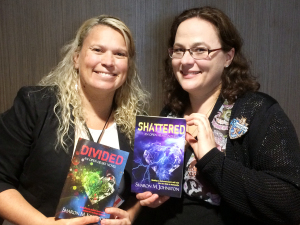
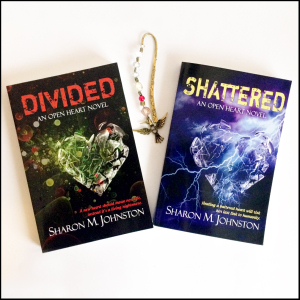
Not only did Sharon write these books, but she made the bookmark too. So talented! O.O


September 20, 2016
Review: ‘Strike’ by Delilah S. Dawson
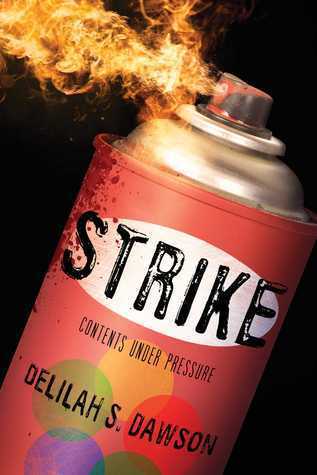
The hit list was just the beginning.
Time to strike back.
After faking her own death to escape her term as an indentured assassin for Valor Savings Bank, Patsy is on the run with her boyfriend, Wyatt. All she wants to do is go home, but that’s never going to happen—not as long as Valor’s out to get her and the people she loves.
Left with no good choices, Patsy’s only option is to meet with a mysterious group that calls itself the Citizens for Freedom.
Led by the charismatic Leon Crane, the CFF seem like just what Patsy has been looking for. Leon promises that if she joins, she’ll finally get revenge on Valor for everything they’ve done to her—and for everything they’ve made her do.
But Patsy knows the CFF has a few secrets of their own. One thing is certain: they’ll do absolutely anything to complete their mission, no matter who’s standing in their way. Even if it’s Patsy herself.
Strike is book two in the Hit series; you can find my review of the first book here. The basic premise of the series is that an apparently evil big bank has bought up the US national debt and has very quietly taken over the country. Its first step was to enlist teenage assassins to thin the “dead weight” — people with huge debts to Valor and no prospect of paying them off. Patsy is one of those teen assassins, forced to do so by means of her mother’s own debt. (If she doesn’t, her mother becomes some of that dead weight.)
And all of this has been consented to, because who ever reads the full terms of service when applying for a credit card?
The premise does stretch the credibility a little bit, at least for me — though that might be because I don’t live in the US, with its sub-prime mortgage crisis as part of my personal experience. Still, if you can accept the premise, these books are lightning-paced and sooooo addictive; I gobbled Strike up in two days. (I did the same with Hit. I love Dawson’s writing style.)
In Strike, we pick the story up where Hit leaves off; Patsy and Wyatt are on the run with a trail of bodies behind them, unable to go home, out of cash and unwilling to use Wyatt’s credit card for obvious reasons. So they hook up with the local chapter of the Citizens for Freedom, an underground group seeking to resist Valor’s sneaky national takeover by fighting against the capitalist machine. Leon Crane is the head of the local chapter. His family owns a lot of the small businesses around town, and you’d think he’d be all for Valor and its focus on the almighty dollar, but he’s an anarchist and creepy cult leader at heart. He is especially fond of recruiting the ex-Valor teen assassins — who better to use as his field agents?
Of course, he and Patsy … don’t get on.
I really love how Patsy develops in this story. She’s clearly suffering from PTSD, but she’s also able to knuckle down when she has to. She discovers a new, non-lethal way to rebel, via graffiti tags — hence the awesome cover. Graffiti is much quicker and clearer in delivering a message than yarn-bombing; Patsy’s use of it becomes a bit of a psychological crutch, and like all good crutches gets her into strife.
Patsy is devoted to her mother and her labrador, Matty, and very concerned that she not turn into the detached killer that Leon and Valor both seem to want her to be. That’s not to say that she won’t pull the trigger when she has to, though. She’s had a lot of practice at it by this point.
Her relationship with Wyatt is something that on the one hand feels a little rushed, but on the other is entirely understandable given the place they’ve both been put in. I got a bit annoyed at Patsy at one point when she gets mad at Wyatt for something that was not his fault — given that in the first book he manages to forgive her in fairly short order for killing his father. (Even though he hated his father, that still took an impressive effort.) I’m not saying I don’t understand her desire to lash out at someone, but poor Wyatt didn’t really deserve it.
Fortunately for her, he has the patience of a saint and is willing to give her the space she needs to cool down. I think we all need a Wyatt in our lives.❤
One of the reasons this book didn’t earn a full five stars from me was that I found the CFF’s methods and choice of targets a little strange. How does sending the owner of a store franchise broke via extreme acts of vandalism hurt a big bank/new government like Valor? Why not target Valor itself? Maybe I missed something? But we get to find out more about Patsy’s absentee father, see more of the connection between the bank and her family, and learn why her list of targets in Hit all bore some connection to her rather than being random.
I’m unsure whether the series is intended to be a trilogy or perhaps longer, but although there isn’t a cliffhanger ending there are still some plot threads left unresolved. I’m definitely keen for book three!
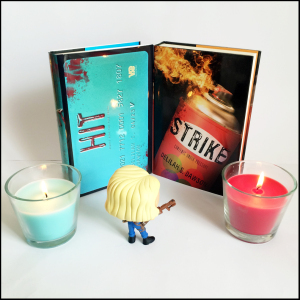

 In case you missed it, yesterday at Aussie Owned and Read I blogged about five bookish gifts for blokes (in belated honour of Father’s Day, and in anticipation of Christmas).
In case you missed it, yesterday at Aussie Owned and Read I blogged about five bookish gifts for blokes (in belated honour of Father’s Day, and in anticipation of Christmas).


September 16, 2016
Review: ‘Nevernight’ by Jay Kristoff
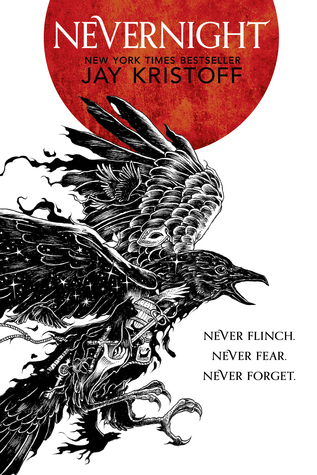
Destined to destroy empires, Mia Covere is only ten years old when she is given her first lesson in death.
Six years later, the child raised in shadows takes her first steps towards keeping the promise she made on the day that she lost everything.
But the chance to strike against such powerful enemies will be fleeting, so if she is to have her revenge, Mia must become a weapon without equal. She must prove herself against the deadliest of friends and enemies, and survive the tutelage of murderers, liars and demons at the heart of a murder cult.
The Red Church is no Hogwarts, but Mia is no ordinary student.
The shadows love her. And they drink her fear.
Given the whole girl-goes-to-assassin-school vibe of the blurb, I had originally thought this book might be YA. You’d think the “assassin” part of “assassin school” would have tipped me off. Still, by the end of the first chapter I knew very well that Nevernight wouldn’t be for younger readers. Jay Kristoff doesn’t pull his punches.
The book is violent, and doesn’t make any excuses for that. There are sex scenes that are just shy of erotica in their level of detail, though I never found them gratuitous. And in the opening chapter we actually get both, the scene flipping back and forward in time between a sex scene and a stabbing, highlighting the, erm, rather obvious parallels.
There are a lot of flashbacks in Nevernight, especially early in the book. The main storyline picks up when Mia is 16 and seeking to be accepted into the Red Church (said assassin school), but we get glimpses into the formative events of her past. I found the flashbacks interesting, but they were presented in italics to differentiate them from the main story, and I found them harder to read as a result (physically harder; large blocks of italics are painful. Maybe I’m just getting old!).
The other stylistic quirks of Nevernight are the use of footnotes, where the narrator provides extra detail about the world — generally amusing anecdotes and trivia that don’t really have a place in the main story but give a glimpse into the narrator’s personality. The other quirk is that we don’t actually know who the narrator is, just that it’s not Mia herself. (My money is on her shadow companion, Mister Kindly.)
There is magic in the world of Nevernight, which is a lush combination of Ancient Rome and slightly less ancient Venice, but it’s the sort of magic that imposes a cost on the user. I really liked that as a mechanic; it stopped the various magic-users from being completely overpowered and silly.
As far as the characters go, Mia is — unsurprisingly — hard as nails. But there’s an empathetic side to her that is rather out of place in a school of murderers, and as a result she makes herself some good friends and snags a sort-of boyfriend among the other novices. Of course, there’s the obligatory mean girl (who has a very good reason for hating Mia, so she’s not your typical shallow archetype) and the Snape-like teacher (though he makes Snape look soft and cuddly). And the classroom politics and scheming tends to wind up with people dead.
Story-wise I won’t say too much, except to say that there’s a plot twist I didn’t see coming and all sorts of other awesomeness in there. I did have one head-scratching moment over Mia’s apparent inability to remember one particular event in her past — I wasn’t clear on the reasons for that, though maybe I missed something.
I’d recommend this book for people who like their fantasy gritty, their prose rich with metaphor and their heroines stabby.
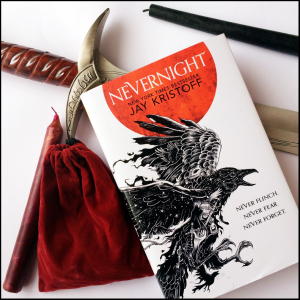



September 8, 2016
Bookstagramming, my way
I know I’ve mentioned from time to time that I am on Instagram now. Like Twitter, I joined Instagram because I had a vague thought that it might be a good idea to have an author profile there. But, also like Twitter, I’ve very rapidly fallen in love with #bookstagram, where book obsessives take smexy photos of books and post them for all to fangirl over. It appears to my creative, visual art-y side. And my book obsessive side.
It’s really interesting, seeing the different approaches people take with their styles, or feeds; some people have a combination of different looks, while others have a definite overall theme: books with lights, books with food, messy book pics, abstract book pics … you get the idea.
After a bit of playing around, I discovered that my favourite sort of photo to take was one with a crisp white background and white colours; the below picture is a screenshot of my most recent nine photographs. That doesn’t mean I don’t do other styles, but that combination predominates.
Here are things you can expect from my posts if you follow me:
Crisp white backgrounds and bright colours (duh)…
PopVinyl figures. Because my son and I have around 80 of the adorable little suckers, and I might as well get some use out of them!
Pokemon, because I am a addict and my son owns a bunch of plushies and toys.
Fake flowers and candles, as these are basically compulsory for bookstagram photos.
The occasional geeky paraphernalia, because that’s how I roll (dice) (see what I did there).
Some photos of finished colouring projects.
BOOKS!
(Sometimes even my books, because they are very pretty, if I do say so myself.)
And even if you don’t follow me — if you don’t have Instagram or just don’t love me that much ;) — I’m sure I’ll keep posting the occasional picture here, when I review a book that I’ve read in paper format. So you won’t miss out!

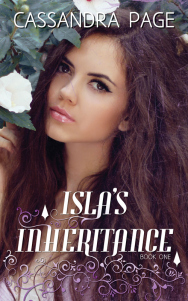 Do you like free things?
Do you like free things?
Just a reminder: the Isla’s Inheritance ebook, the first book in my young adult urban fantasy series, is available free from the following retailers:
Amazon US | Amazon UK | Amazon Australia


August 27, 2016
Review: ‘Harry Potter and the Cursed Child’ by Jack Thorne
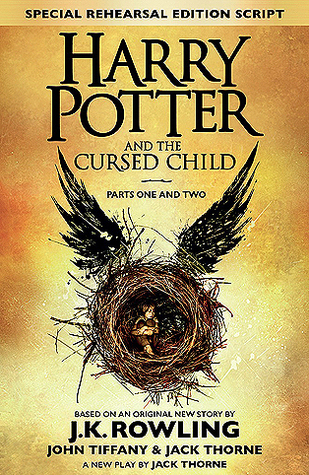
Based on an original new story by J.K. Rowling, Jack Thorne and John Tiffany, a new play by Jack Thorne, Harry Potter and the Cursed Child is the eighth story in the Harry Potter series and the first official Harry Potter story to be presented on stage. The play will receive its world premiere in London’s West End on July 30, 2016.
It was always difficult being Harry Potter and it isn’t much easier now that he is an overworked employee of the Ministry of Magic, a husband and father of three school-age children.
While Harry grapples with a past that refuses to stay where it belongs, his youngest son Albus must struggle with the weight of a family legacy he never wanted. As past and present fuse ominously, both father and son learn the uncomfortable truth: sometimes, darkness comes from unexpected places.
Gosh, so many mixed feelings, you guys. I don’t normally review books this close to their release date, so I’ll be super-careful to avoid spoilers.
I think ultimately how much fans of the series will love or loathe The Cursed Child will depend on the extend to which the nostalgia of catching up with beloved characters outweighs the flaws in the story. Because we do get to see pretty much all the major characters from the series at one point or another — particularly Harry, Ginny, Hermione and Draco. (I was never a massive fan of Ron, but I still didn’t really like the way he was portrayed in the script — even though he did get some amusing lines.)
The absolute best thing about The Cursed Child is the delightful Scorpio Malfoy, who at Hogwarts becomes friends with Albus, Harry’s second son. Scorpio is optimistic, friendly and funny, and this book is worth reading just for him. I wanted to cuddle him and bake him pie.
I … wasn’t as enthusiastic about Albus, who is the sullenest teenager that ever sullened. To be fair to him, he is bullied horrifically by his Hogwarts peers after failing to live up to their expectations. But he still isn’t much fun to be around, and I wanted to see more of the relationship between him and his parents, because, honestly, I didn’t get it. (Also, his older brother, James, is mentioned in passing and then never seen again. Like, if he were also at Hogwarts, surely he’d stick up for his brother? I don’t know, maybe I missed something.)
Albus’s familial relationships weren’t the only case where I wanted more than I got from The Cursed Child. Despite the size of the book, it is a light read. In case it wasn’t clear from the blurb, it’s a script for a play. That means the action is thinly described and not very satisfying (the big fight scene was basically a one-liner). The dialogue, by necessity, needs to tell a lot of the action, which means that the “show, don’t tell” rule of good novel writing is often ignored.
The dialogue itself is closer to real speech than a novel’s typical dialogue, which omits a lot of the “ums” and verbal meandering that people do. The end result is that the play can be quite trying to read at times; I quite often had to re-read larger blocks of speech to get a sense for what the character was saying, because their dialogue was so choppy. (As an aside, the number of misused commas I saw was rather depressing. Given how much the publisher must have made from this release, surely they could have afforded a copy editor?)
Finally, the plot was — for me, at least — entirely predictable and had a few plot holes that left me confused, and one ridiculous moment that made me shake my head. On the upside, it also had a few touching moments.
If I saw The Cursed Child as a play rather than reading it, the stylistic flaws would have been less obvious. The fight scenes would be acted out, the dialogue would seem more natural to the ear, and the commas wouldn’t offend. Maybe Albus would have been more sympathetic too, though I’m not so sure about that. If it’s ever produced in Australia I’ll definitely check it out, but I can’t see myself re-reading the script the same way I would the original novels.
I wavered between three and four stars for The Cursed Child, because I did enjoy it despite its flaws. Maybe I’m more sappy and sentimental than I thought.
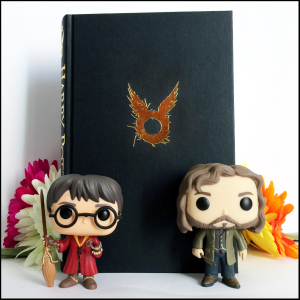



August 25, 2016
Review: ‘Stardust’ by Neil Gaiman
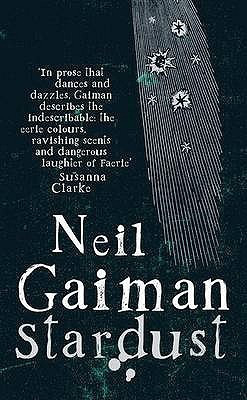
Young Tristran Thorn will do anything to win the cold heart of beautiful Victoria—even fetch her the star they watch fall from the night sky. But to do so, he must enter the unexplored lands on the other side of the ancient wall that gives their tiny village its name. Beyond that old stone wall, Tristran learns, lies Faerie—where nothing, not even a fallen star, is what he imagined.
From #1 New York Times bestselling author Neil Gaiman comes a remarkable quest into the dark and miraculous—in pursuit of love and the utterly impossible.
Given how old Stardust* is, I debated whether or not to write a review for it, especially as I don’t think Mr Gaiman really needs my validation one way or the other. Still, maybe someone will read this—someone like me, who has been under a rock this whole time and hasn’t seen the movie either—and decide the book is right up their alley.
Also, any excuse to share my various Instagram pictures! ;)
Stardust is a quick read, so thin that you might be forgiven for mistaking it for middle grade fiction. But there are a few scenes in there that are for an older audience; the book is based on the old-school, original Grimm fairy tales (from before they sanitised them for children), and Gaiman deliberately includes bloodthirsty, selfish witches, a trio of murdering princes, and many other fairy tale trappings.
The writing is beautiful, as always, with some long, lovely sentences that evoked an old-world feel without being difficult to absorb. The story was largely quite predictable (also like fairy tales) and the main character, Tristran, was a little dense at first. Okay, a lot dense—though maybe I’m being unkind. Maybe his head was just full of romantic notions and a teenage crush, and he got swept away by both. Still, given that he largely seems to be a kind lad, the way he treats the star at first is unfathomable. And if it weren’t for the aid he receives (largely as a result of his good manners) he’d have been killed or lost in the first few minutes of entering Faerie.
The relationship between him and the star is never really fully developed. Because there’s a lot of hand-waving around events as they travel, she seems to go from “I hate you” to quietly loving him without the transition being obvious. Again, this does suit the fairy tale style—I can’t think of a single fairy tale that has a genuine romance storyline—but it wasn’t as satisfying to read as it could have been.
The setting, though, is delightful: quixotic, unforgiving, beautiful Faerie. The characters weren’t what immersed me in the story; it was the world itself. Gaiman is no doubt a master of his craft, with a vivid imagination and a tremendous ability to execute his story. For me, that’s what brought this book up to a four-star read. I’d highly recommend it for fans of fairy tales and fairy tale retellings.
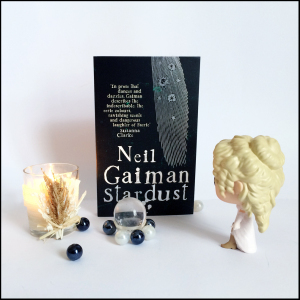

*Note: Not the kind in Pokemon GO.

In case you missed it, last week I was over at Aussie Owned and Read talking about pitching contests — why I used to enter them, and why I don’t anymore.


August 9, 2016
Review: ‘Eye of the Storm’ by Emmie Mears

Earth teeters on the edge of a razor sharp blade.
With the Summit on barely-unified tenterhooks and hellkin bubbling into Earth with no sun to stop them, Ayala Storme has her hard-won family, an uncertain new love, and a team of allies — half of whom have betrayed her in the past.
When the cities of North America begin to fall to demon hordes, Ayala has to fight her way back into Nashville in a desperate hope to save her city. With the witches trying to find the original source of the imbalance that allows hellkin a tie to Earth and the Mediators ready to draw their swords every time they see a shade, time is ticking away.
The witches are working as fast as they can, but what they find may shake the foundations of everything Ayala has ever known — and the answers needed to salvage what’s left of Earth may only lie beyond Earth itself, in the sixth hell.
The battles are over. It’s time for the war.
Eye of the Storm is the fourth and last book in the Ayala Storme series, which is now one of my favourite urban fantasy/alternate Earth series out there. You can find my reviews of the first three books here, but if you need further convincing, I’ll give you some reasons why you should read the series. (Note: You really do need to read the series — don’t jump in at book four and expect to be able to keep track of all the characters!)
Some minor spoilers for earlier books follow.
Eye of the Storm is, as the blurb makes clear, about the arrival of the demon-induced apocalypse. The beginning felt a little awkward to me, in that I didn’t quite follow the reasons for Ayala and her crew leaving Nashville to go back to their cabin in the woods. (That might have just been because I stayed up past my bedtime several nights in a row and missed some crucial piece of detail.) However, once the action gets going, it really gets going.
I enjoy apocalypse fiction, and Eye of the Storm definitely delivered. There is a lot of emphasis on getting back into the city, on bunkering down and surviving, on attempts to work together even though the Summit is divided on how to deal with Ayala’s allies, the shades.
The witches, led by Gryfflet Ashberry, are trying to work out a spell to help them figure out what it is that allows the demons to create portals to Earth. Ayala isn’t big on the research — like I said in a previous review, she’s more like Buffy than Willow (except that both Ayala and Willow are bisexual, of course). Still, she’s involved enough that we get a sense for how his research is progressing — and once it gets to a certain point, she has to take finding answers into her own hands. By that point I’d already guessed what the big reveal/information would be, but I found what she got up to interesting reading nonetheless!
One big point of difference between this and most end-of-the-world stories is that, although we get a lot of monster-splatting action along the way, the book doesn’t end in a big smack-down fight but with more of a “witches’ ritual and epic speech” vibe. I was actually glad of the difference; it wasn’t that the big fight didn’t happen, just that we only got to see parts of it. And since there wasn’t some giant uber-bad to fight — a dragon to slay or whatever — if we’d seen more of it, it would’ve felt a little … samey?
This entire series is fast paced and full of action, sass, tender romance (though barely any sex), strong friendships and splattery fights. There are some swears if that sort of thing bothers you. If it doesn’t, read Ayala Storme. You won’t regret it.



August 7, 2016
My name is Cassandra, and I’m a Pokemon GO addict…
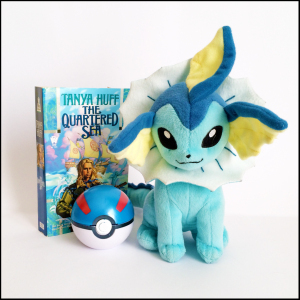 I was on holidays when Pokemon GO came out. But I still had my smart phone, so I saw the flood of posts on social media. At first I was bemused by the idea, because I never really got into Pokemon as I was growing up. But my son is seven and a mad Pokemon fan; he got about 15 Pokemon plushies for his birthday (including the Vaporeon pictured above). He’s seen a lot of the TV show — like, a lot — and has some of the old games, though he hasn’t played them much due to the amount of fast reading required.
I was on holidays when Pokemon GO came out. But I still had my smart phone, so I saw the flood of posts on social media. At first I was bemused by the idea, because I never really got into Pokemon as I was growing up. But my son is seven and a mad Pokemon fan; he got about 15 Pokemon plushies for his birthday (including the Vaporeon pictured above). He’s seen a lot of the TV show — like, a lot — and has some of the old games, though he hasn’t played them much due to the amount of fast reading required.
Anyway, I didn’t think much of the idea of Pokemon. How is going out and capturing wild animals and then using them in battles for sport a good idea? (Where is the RSPCA in this universe? Not to mention all the ten year old kids leaving home to go on adventures to catch said wild animals! And do the Pokeballs have toilets? So many questions!) Still, Pikachu was cute, and my boy enjoyed it and absorbed the various names and evolutions like a sponge.
On the other hand, once I learned more about Pokemon GO, I was fascinated. I found the idea of augmented reality games, something I hadn’t really encountered before, strangely compelling. So when my son came home after our holiday (via Sydney, where he stayed with his dad for a few days), I wasn’t exactly upset that he had a Pokemon GO account and was already level 14.
Of course, he doesn’t have a phone, so I have to play it with him. Right?
Seriously, this game is so much fun — and, more than that, I love how easy it is to get my couch potato of a child out of the house. On Friday I got a tip-off from someone at work of a good place to catch Pikachu. Normally my boy would prefer to sit at home and watch Pokemon on TV, especially after school, but instead we scooted down to the local lake and spent an hour stomping around, playing at the park and making friends with people’s dogs.
There is a spectrum of people who play Pokemon GO, as there is in any other endeavour, but for the most part I’ve found them to be friendly and open. Sure, we’ve come across the occasional pack of swearing teenage boys (something I wouldn’t have an issue with if my boy weren’t listening), and after we captured a gym the look on one young man’s face as he stormed up gave me pause. Boy, was he pissed!
But there have been a lot of people like me, taking their kids out for a stroll and catching Eevees. We’ve seen a lady taking her parrot out for some air, randomly met some kids my boy knew from school, and commiserated with strangers when their Squirtle ran away. We’ve also been out to a lot of local tourist attractions, hunting for Pokemon. (If you’re visiting Canberra, get a friend to drive you around all the Poke-stops in the arboretum. Wow!)
I’m not a Pokemon expert yet, by any stretch of the imagination, but luckily I have a small consultant to hand. I’ve finally figured out how to throw a decent curveball, and we’ve evolved a Raichu. I’m still not 100% sure about the “wild animals battling” thing, but it bothers me less in game form, where they are impersonal elemental forces, rather than in the TV show, where they can emote, and snuggle their owners. (I am suspicious of what the professor needs all those spare Pokemon for. Is he feeding them into a compactor to make candy? Building a Pokemon army?! Again, so many questions!)
Do you play Pokemon GO? Have you found it a positive experience overall?
